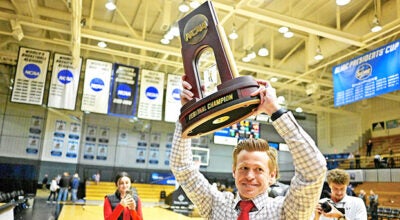Sister Lakes’ new classroom arrangement successful so far
Published 10:46 am Friday, February 21, 2014

Jennifer Webb teaches math to her classroom, which has a combination of fourth and fifth-grade students. It’s one of three split classrooms that Sister Lakes Elementary has implemented since the beginning of the school year. (Submitted photo)
While split classrooms aren’t a new concept for Michigan schools, it did draw some raised eyebrows when administrators at Sister Lakes presented the idea last fall.
The school began combining students from different grades into single classrooms at the beginning of the school year in response to declined enrollment from certain grades. Despite the initial shellshock, the plan appears to be working for the elementary school, said Principal Mike Campbell.
“I think students have taken the transition well,” Campbell said. “They understand our new set up and why we’re doing it.”
Under the new system, about half the students at each grade level are placed in a split classroom, learning under a single teacher alongside peers from another grade level. The school currently has three split classrooms: a kindergarten/first-grade class, a second-grade/third-grade class and a fourth-grade/fifth-grade class.
The students who are placed in these split classes aren’t just randomly selected from the ranks, Campbell said. Instead, the administration looks at students’ academic performance, test scores and other qualities before deciding which classroom to put them in.
The most important trait the school looks for in students working in a split classroom is the ability to work independently, Campbell said.
One of the challenges the school faced early on with implementing the system was determining which incoming kindergarten students to place in the split classroom. Though administrators were able to measure their present level of learning through pre-enrollment assessments, getting a solid grasp on students’ personalities can be a little more difficult.
“It’s a little bit of a challenge, since they weren’t here the year before so we don’t know as much about them,” Campbell said.
Teachers working with the combined classes faced a bit of learning curve themselves. While some curriculum is shared across both grades, teachers must create two separate lesson plans and coursework for each level, Campbell said.
“The challenge is that (teachers) have to be familiar with curriculum for two grades,” Campbell said. “It’s double the planning compared to a teacher who is only teaching one grade.”
Despite some early kinks, the teaching staff has adjusted well to the additional workload over the past several months, Campbell said.
“We’ve been very pleased,” he said. “The staff has done a fantastic job supporting each other to ensure the success of our students.”
Parents have also been supportive of the changes made to Sister Lakes Elementary classrooms, the principal said. While many are unfamiliar with the concept, none have expressed concern over their students’ wellbeing following the change.
“Parents who asked questions were just trying to understand what we are doing,” Campbell said. “I’ve had to do a lot of explaining and discussing with them so they understood what it meant for their children’s education.”
So far, the school doesn’t have any solid indicators of whether the split classes have had an impact on student grades, though upcoming assessment tests in the spring will change that.
Regardless, Campbell said he is pleased with the direction the school has taken since the beginning of the year.
“It has worked out very well for us this year, and we plan on the same configuration for next year,” he said.






